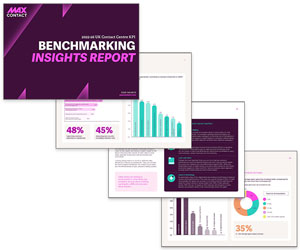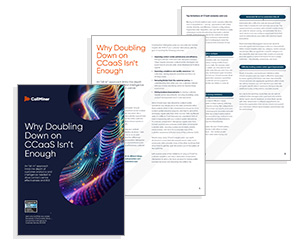Sentiment analysis is a tool that helps contact centres gauge customer emotions based on their interactions.
By analysing conversations, it provides deeper insights into customer opinions, allowing contact centres to respond more effectively and enhance customer experiences.
To find out more, we asked MJ Johnson, Senior Director, Product Marketing at CallMiner, David Samuel, Chief Product Officer at Contexta360, and Sean McIver, Product Owner at MaxContact, to explain sentiment analysis.
Video: What Is Sentiment Analysis?
Watch the video below to hear MJ, David, and Sean answer the question ‘what is sentiment analysis?’:
With thanks to the following people for contributing to this video:
- MJ Johnson, Senior Director, Product Marketing at CallMiner
- David Samuel, Chief Product Officer at Contexta360
- Sean McIver, Product Owner at MaxContact
How Sentiment Analysis Works
Sentiment analysis goes beyond traditional survey-based feedback by capturing insights from actual conversations. Here’s how it makes a difference:
1. Moving Beyond Surveys
Many contact centres rely on surveys to gather customer sentiment, but these often represent only a small fraction of their customer base.
“You can use sentiment analysis to automate those surveys based on the actual natural conversation, rather than what you’re feeling afterwards.
For example, that was a terrible call, I’m going to do a bad survey score for somebody, or that was a great call.
It gives you a more natural way to undertake that task.” – David Samuel
Sentiment analysis uses real-time interactions to provide a broader and more accurate picture of customer feelings.
2. Capturing Natural Reactions
Instead of relying on post-call surveys where emotions may be exaggerated or misremembered, sentiment analysis assesses conversations as they happen, which ensures a more accurate reflection of the customer’s experience.
“Sentiment analysis helps businesses identify customers’ positive, neutral, or negative leanings.
Which helps those businesses use data insights to better understand customers’ opinions, really respond to their needs, and ultimately to deliver improved experiences to those customers.
Many businesses rely largely on survey-based solutions, and they play an important role in gathering customer sentiment. But ultimately, they tend to deliver insight into typically a small subset of the entire audience.” – MJ Johnson
3. Understanding Tone and Context
Text-based communication can often be misinterpreted, as Sean explains:
“How many times have you written an email or sent a text message to somebody, and they’ve taken offence? And it’s because they’ve misread how you would say that.
The difference between speech analytics and sentiment analytics is that it crosses that divide.
I could write down an entire conversation and I could hand that to three different people, and they would have exactly the same information, but they would read different things into it.
Sentiment analysis is all about looking at the cadence, the pace, and the change that happens across the course of a call. The linguistics used, how people respond to that, and the periods of silence.
It allows you to take what was literally said in words, and add on to that what the intent was behind those words.”
Sentiment analysis looks beyond words, considering factors like tone, pace, and pauses in speech to determine intent and emotional state.
If you are looking for more great insights from the experts, check out these next:
- A Quick Introduction to Typical IVR Solutions
- WFM Tools That Are Available
- Understanding How IVR Works
- Top Uses of Speech Analytics
Author: Robyn Coppell
Reviewed by: Hannah Swankie
Published On: 30th Aug 2022 - Last modified: 25th Sep 2025
Read more about - Video, Analytics, CallMiner, Contexta360, David Samuel, Emotion, MaxContact, MJ Johnson, Sean McIver, Videos




















